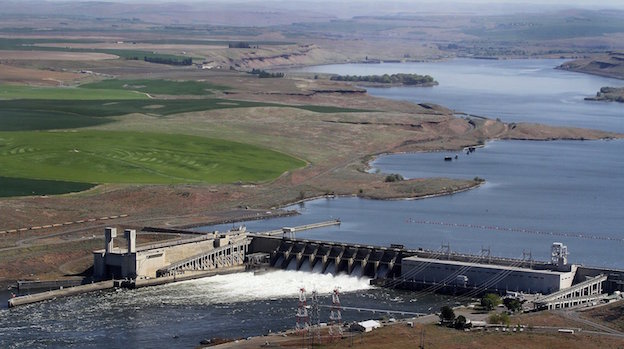forum
library
tutorial
contact

A Serious Gap in Knowledge
by Kurt MillerRegister-Guard, November 12, 2020
|
the film forum library tutorial contact |

|
A Serious Gap in Knowledgeby Kurt MillerRegister-Guard, November 12, 2020 |
In light of this information, it is clear that reducing or removing our hydropower resources
may actually be harmful to the long-term survival of salmon populations.
 A little knowledge is a dangerous thing.
A little knowledge is a dangerous thing.
That saying has probably never been more apparent than in the case of government responses to the COVID-19 outbreak. During the early stages of the pandemic, some officials in New York, Washington, among other states, sent infected people to nursing homes to quarantine before realizing that elderly populations are especially vulnerable to the virus. As we know, the results were tragic.
That isn't a dig aimed at government agencies. Rather, it's a clear example that, even with the best intentions, we can do more harm than good if we're missing vital information.
In our efforts to recover threatened salmon populations, the same is true. Scientists in the Pacific Northwest have been working for decades to model salmon survival rates under different scenarios, so that the region can develop more effective salmon recovery policies.
However, just like with COVID-19, the limiting factor around their work is often incomplete information.
As an example, many salmon scientists have relied exclusively on data from PIT tags. These are small RFID transponders implanted in a subset of salmon that are tracked when they swim past nearby receivers in the river system.
Unfortunately, salmon caught in the ocean and river for commercial, sports and tribal purposes -- also known as harvested salmon -- are not scanned for PIT tags.
If this sounds like a pretty big omission, you are right.
A new peer-reviewed study shows just how meaningful this omission is. The published research was conducted by the award-winning scientist Dr. David Welch and his team from Kintama Research. Welch has been involved in marine research for 40 years and is recognized globally for his salmon research.
Welch utilized a different government-funded tracking system that allowed him to incorporate fishing harvest into the survival estimates. The research demonstrates that Chinook salmon harvest can be very large -- up to 75% of the total salmon run in some places -- and tends to vary greatly from year to year.
This finding is not a condemnation of salmon fishing, which is especially important to the culture and economy of Pacific Northwest Native American tribes. Instead, it points to a serious gap in knowledge that has prevented us from developing informed energy and environmental policies.
A prime example of how this knowledge gap has worked its way into regional policy is the persistent call for breaching the four lower Snake River dams.
One regional model uses historical data, primarily focusing on in-river variables like volume of water and spill levels (i.e., water spilled over dams instead of powering past turbines). Comparing those factors to historical salmon returns, it concludes that dam breaching would restore healthy fish populations to the lower Snake River.
But, as mentioned above, the model has not considered the sizable and varying effect of harvest. The model also excludes several important factors related to ocean survival, such as prey availability and juvenile salmon size. Now we know those omissions represent critical flaws in its conclusions.
This finding turns our understanding of salmon recovery on its head.
Critically, the region has lost literally millions of megawatt hours of carbon-free energy, costing northwest households roughly $8 billion in higher electric bills, based on an incomplete picture. Two different federal judges -- Judge James Redden and Judge Michael Simon -- ordered higher spill levels in the Columbia River Basin as a result of this flawed understanding.
This history is even more troubling, because new scientific research from several independent sources is pointing to climate change as the key driver in oceanwide declines in salmon survival. These sources include researchers from the University of Alaska, NOAA Fisheries, the UN Intergovernmental Panel on Climate Change and Dr. Welch.
In light of this information, it is clear that reducing or removing our hydropower resources may actually be harmful to the long-term survival of salmon populations.
My organization is calling on other environmental advocacy groups to join us in supporting explicit statistical testing for dams' effect on salmon survival rates. Using best practices now embraced in biomedical sciences -- randomized double-blind experiments with explicit treatment and control groups -- would provide an objective scientific basis for creating effective salmon recovery and energy policies.
As was the case with COVID-19, initial assumptions about the effect of dams on salmon survival have proven incorrect. We must reevaluate everything we think we know about the relationship between salmon and hydropower before we do more harm than good.
learn more on topics covered in the film
see the video
read the script
learn the songs
discussion forum
